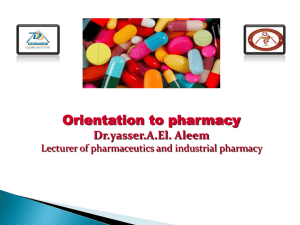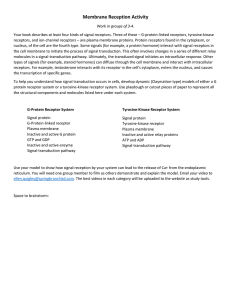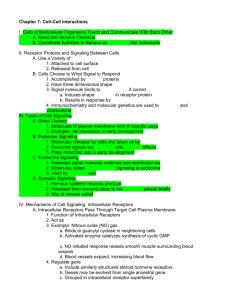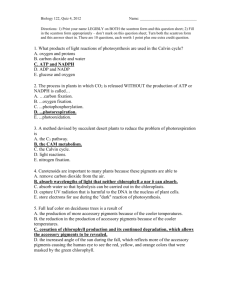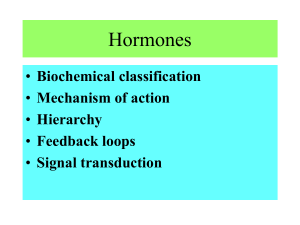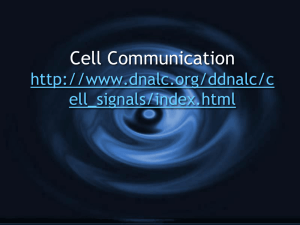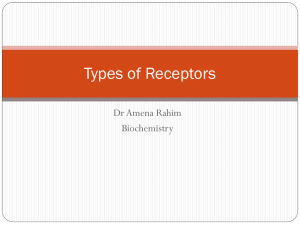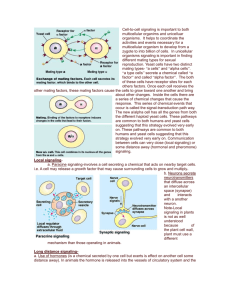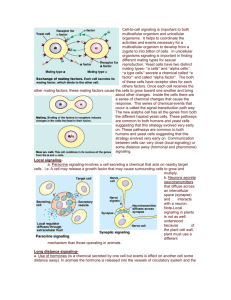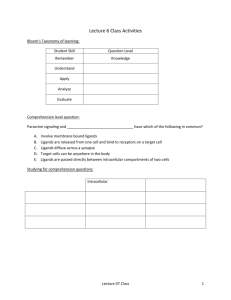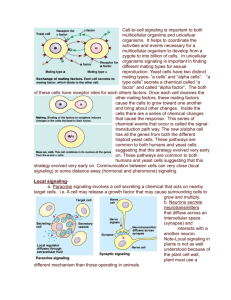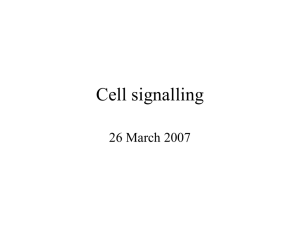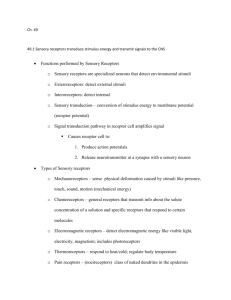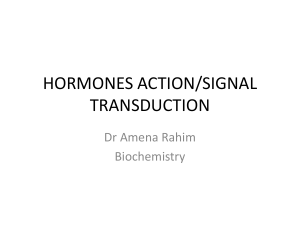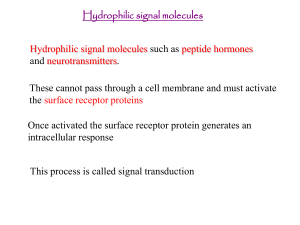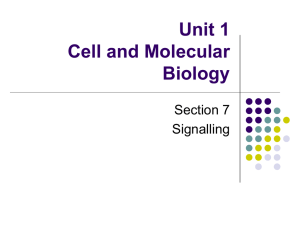Cell Signaling and the Endocrine System
advertisement
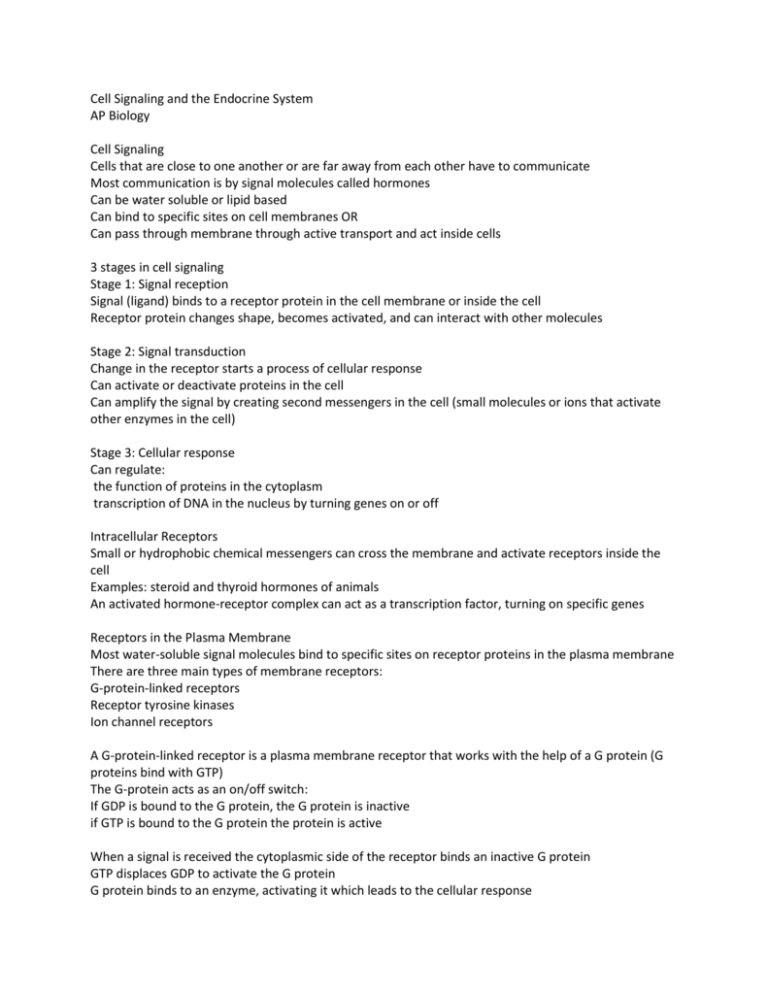
Cell Signaling and the Endocrine System AP Biology Cell Signaling Cells that are close to one another or are far away from each other have to communicate Most communication is by signal molecules called hormones Can be water soluble or lipid based Can bind to specific sites on cell membranes OR Can pass through membrane through active transport and act inside cells 3 stages in cell signaling Stage 1: Signal reception Signal (ligand) binds to a receptor protein in the cell membrane or inside the cell Receptor protein changes shape, becomes activated, and can interact with other molecules Stage 2: Signal transduction Change in the receptor starts a process of cellular response Can activate or deactivate proteins in the cell Can amplify the signal by creating second messengers in the cell (small molecules or ions that activate other enzymes in the cell) Stage 3: Cellular response Can regulate: the function of proteins in the cytoplasm transcription of DNA in the nucleus by turning genes on or off Intracellular Receptors Small or hydrophobic chemical messengers can cross the membrane and activate receptors inside the cell Examples: steroid and thyroid hormones of animals An activated hormone-receptor complex can act as a transcription factor, turning on specific genes Receptors in the Plasma Membrane Most water-soluble signal molecules bind to specific sites on receptor proteins in the plasma membrane There are three main types of membrane receptors: G-protein-linked receptors Receptor tyrosine kinases Ion channel receptors A G-protein-linked receptor is a plasma membrane receptor that works with the help of a G protein (G proteins bind with GTP) The G-protein acts as an on/off switch: If GDP is bound to the G protein, the G protein is inactive if GTP is bound to the G protein the protein is active When a signal is received the cytoplasmic side of the receptor binds an inactive G protein GTP displaces GDP to activate the G protein G protein binds to an enzyme, activating it which leads to the cellular response Conversion of GTP to GDP inactivates the G protein which leaves the G protein and enzyme ready for reuse G protein functions Embryonic development Sensory reception Involved in human diseases (cholera, pertussis, botulism interfere with G proteins) Up to 60% of medicines influence G protein pathways An ion channel receptor acts as a gate when the ligand binds and the receptor changes shape the gate allows specific ions, such as Na+ or Ca2+, through a channel in the receptor this is how neurons transmit stimulus through your nervous system Protein Phosphorylation and Dephosphorylation In many pathways, the signal is transmitted by a cascade of protein phosphorylations This phosphorylation and dephosphorylation system acts as a molecular switch, turning activities on and off Hormones Endocrine glands secrete hormones into the blood stream for delivery to the target organs Hormones work at all levels of organization and can have different action on each type of target cell Cells need the right receptors for the hormone to bind; some cells have receptors for many different hormones, some for only a few Types of hormones Steroid hormones: lipid soluble molecules made from cholesterol Produced only by the sex organs and adrenal glands Enters cells and interacts with DNA to stimulate or inhibit protein synthesis ex: androgens, estrogens Peptide hormones: made from amino acids (1-200) Water-soluble molecules that bind to receptors on the cell membrane Never enter the cell but cause a cascade of events inside the cell Ex: glucagon, insulin

